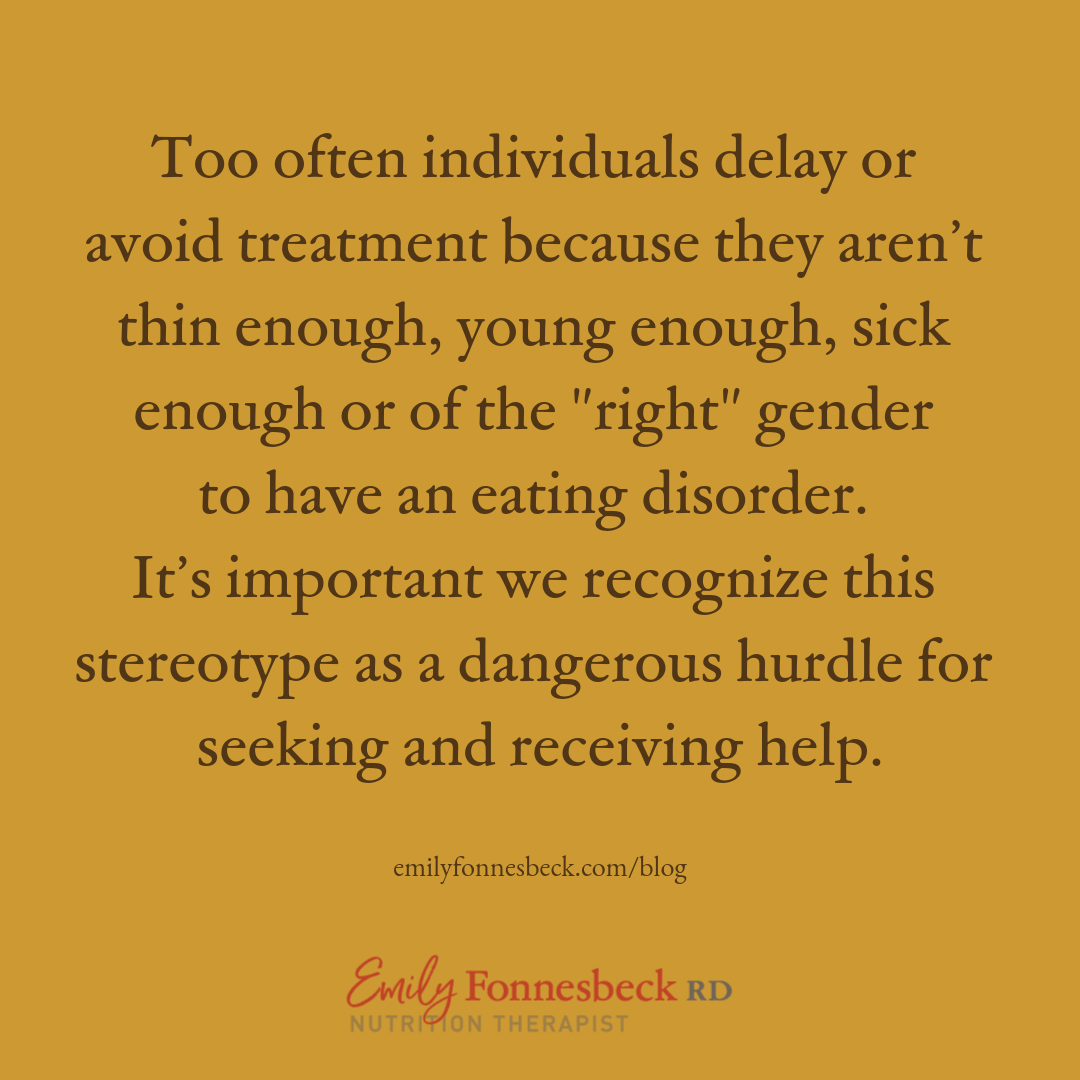Eating disorders are serious life-threatening mental illnesses.
National surveys show that 20 million American women and 10 million American men will suffer from an eating disorder at some point in their lives. There is not a single, specific cause; it’s usually a variety of biological, psychological, and sociocultural factors that combine to create the vulnerability in the individual.
National Eating Disorder Awareness Week happens each year during the month of February and this year’s awareness week is Feb. 25 – March 3.

This year’s theme is Come As You Are, with the goal of sending “a message to individuals at all stages of body acceptance and eating disorders recovery that their stories are valid. We invite everyone, especially those whose stories have not been widely recognized, to have the opportunity to speak out, share their experiences, and connect with others.”
Eating disorders are treatable, but often go undetected for a few reasons: misconceptions about what they are and who they affect, and the cultural normalization of food and weight preoccupation.
Below are common myths and misconceptions:
Myth #1: You can tell if someone has an eating disorder based on how they look.
The media often portrays individuals with eating disorders to be emaciated, female, young and white. In reality, eating disorders affect individuals of all shapes and sizes, ages, genders and ethnicities. Too often, individuals delay or avoid treatment because they aren’t thin enough, young enough, sick enough or of the “right” gender to have an eating disorder, so it’s important that we recognize this stereotype as a dangerous hurdle for seeking and receiving help.

Myth #2: Eating disorders are a lifestyle choice and are about vanity.
Eating disorders are life-threatening mental illnesses with serious physical and mental ramifications. Eating disorder behaviors are often used as a way to cope with uncomfortable emotions or difficult life events. Once the disorder has taken hold, it becomes a functional and self-sustaining process that is difficult to break free from. A patient can choose to pursue recovery, but it will require the help of a team of professionals ideally consisting of a therapist, dietitian and physician and possibly others, depending on the case.
Myth #3: Eating disorders are caused by bad parenting.
As stated, eating disorders are caused by a variety of factors. They are not a choice; no one chooses to have an eating disorder. Affected families are very diverse and 50 to 80 percent of a person’s risk for developing an eating disorder comes from genetic factors, according to the Center for Eating Disorders at Sheppard Pratt. Causation has far more to do with the genetic predisposition of the individual than with any environmental stimulus. That said, families can be a great support to their loved one while in recovery.
Myth #4: Eating disorders are only about food and weight.
You may be tempted to tell someone with an eating disorder to “just eat” or “just stop eating,” but it’s far more complex than that. While recovery from an eating disorder will include interventions for normalizing food patterns and behaviors, there are underlying issues that need to be addressed in order to make a full recovery. This is why a full treatment team is essential.
Myth #5: Once a patient is at a ‘normal weight,’ they have recovered from an eating disorder.
Recovery from an eating disorder is about much more than body size and weight. Because it has biological, psychological and environmental triggers, it’s important that we address recovery holistically. Of course weight restoration is important for those who need it, but a more accurate statement would be that full recovery depends on full acceptance of the genetic set point that quite possibly may exceed BMI standards of “normal”.
These myths can lead to stigma, making it difficult for individuals to seek treatment. It can also affect the medical professional’s ability to identify and diagnose an eating disorder that falls outside of the stereotype. National Eating Disorder Awareness Week gives us the opportunity to educate the public on these issues.
This is especially important given the nutrition, diet and weight-obsessed culture we live in. It’s become culturally acceptable to struggle with food and body image, so someone that has a serious eating disorder could easily fly under the radar and delay treatment. The quicker an eating disorder is diagnosed and treatment interventions begun, the better the chance at a full recovery.
If you suspect that you or someone you love could be struggling with an eating disorder, you can use this short screening tool from the NEDA to determine if it’s time to seek help.
Resources for those who need help
- National Eating Disorders Association
- NEDA screening tool
- Toll-free National Eating Disorders Helpline: 800-931-2237, available Mon.-Thurs., 9 a.m.- 9 p.m., Fri., 9 a.m.- 5 p.m. EST
- 24/7 Crisis Support via text: send NEDA to 741741
Blogpost adapted from my 2018 NEDA article for KSL

Trackbacks/Pingbacks